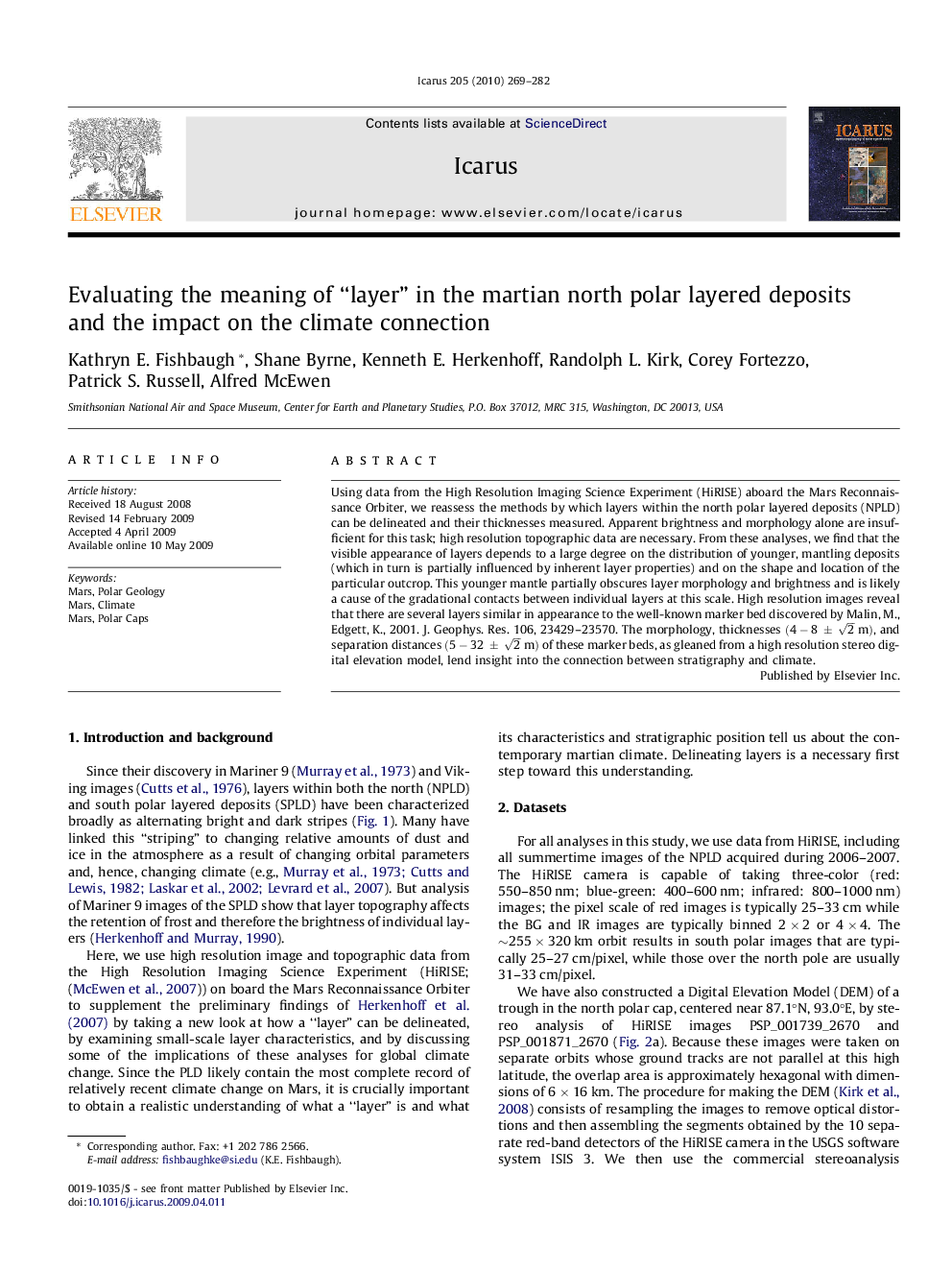| Article ID | Journal | Published Year | Pages | File Type |
|---|---|---|---|---|
| 1774427 | Icarus | 2010 | 14 Pages |
Using data from the High Resolution Imaging Science Experiment (HiRISE) aboard the Mars Reconnaissance Orbiter, we reassess the methods by which layers within the north polar layered deposits (NPLD) can be delineated and their thicknesses measured. Apparent brightness and morphology alone are insufficient for this task; high resolution topographic data are necessary. From these analyses, we find that the visible appearance of layers depends to a large degree on the distribution of younger, mantling deposits (which in turn is partially influenced by inherent layer properties) and on the shape and location of the particular outcrop. This younger mantle partially obscures layer morphology and brightness and is likely a cause of the gradational contacts between individual layers at this scale. High resolution images reveal that there are several layers similar in appearance to the well-known marker bed discovered by Malin, M., Edgett, K., 2001. J. Geophys. Res. 106, 23429–23570. The morphology, thicknesses (4-8±2m), and separation distances (5-32±2m) of these marker beds, as gleaned from a high resolution stereo digital elevation model, lend insight into the connection between stratigraphy and climate.
